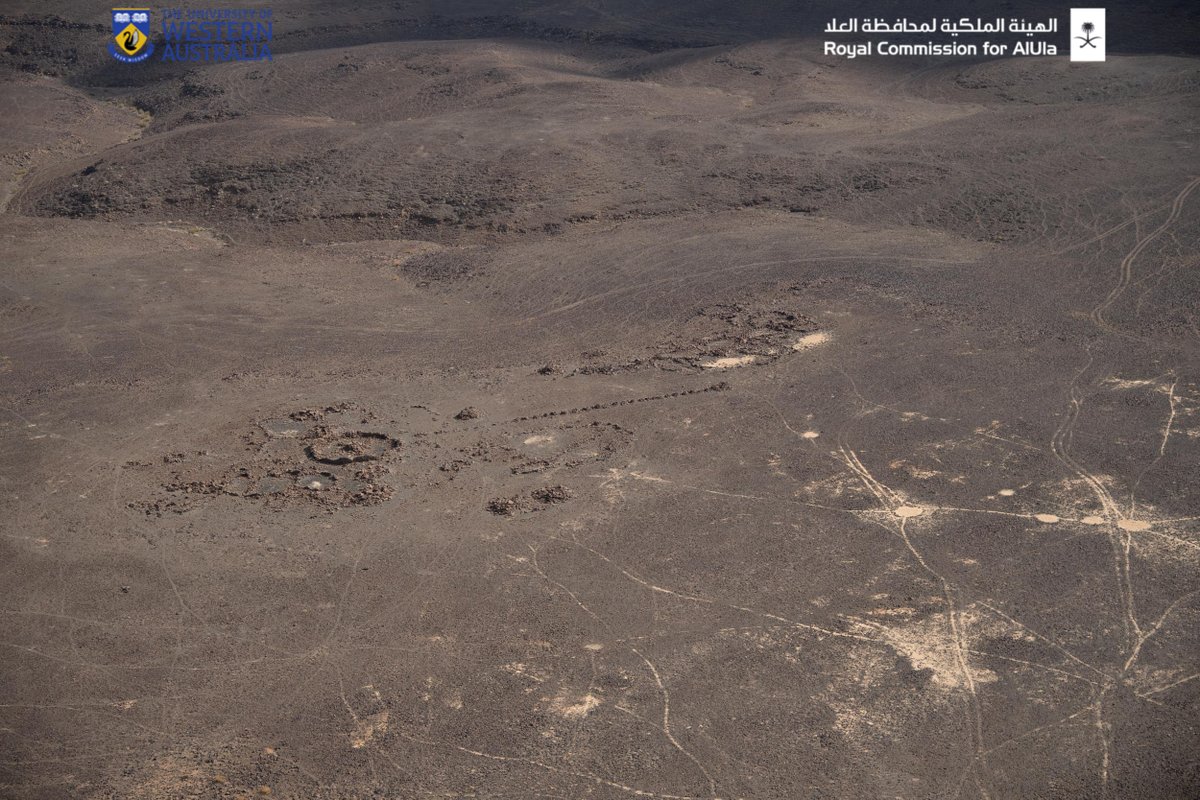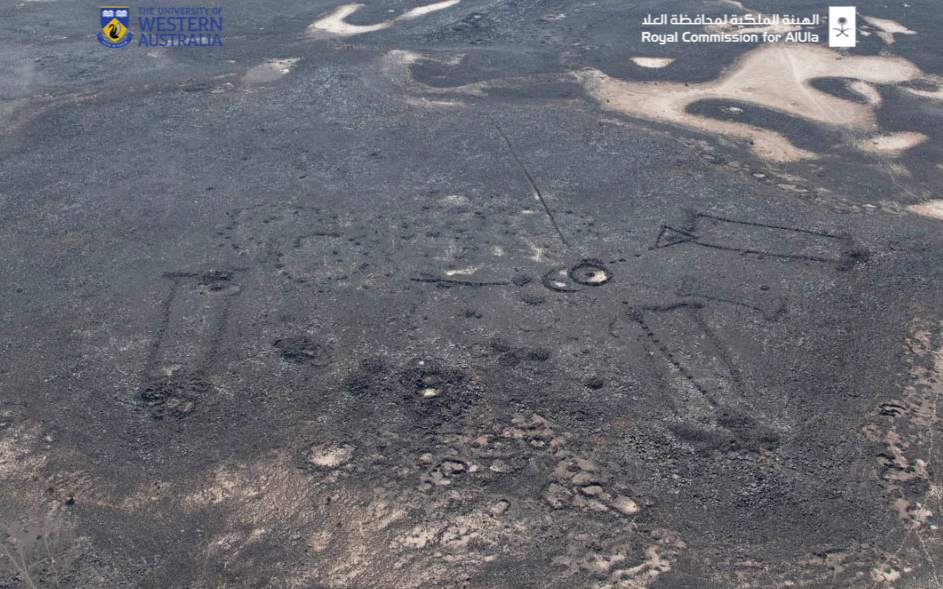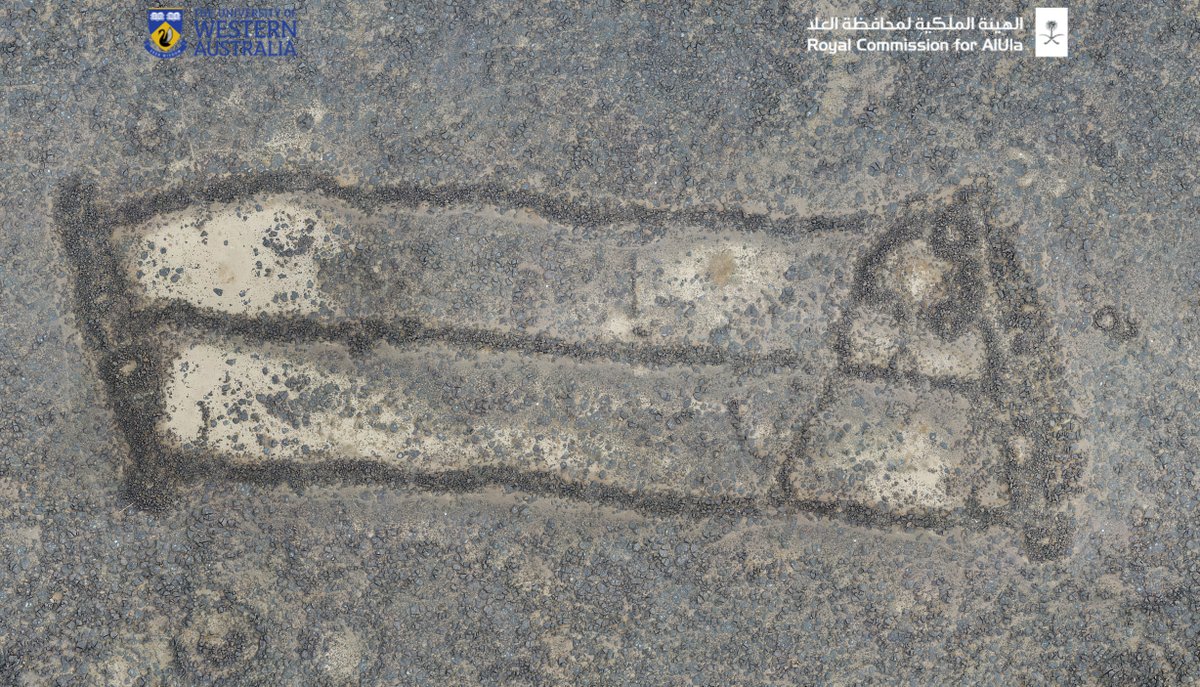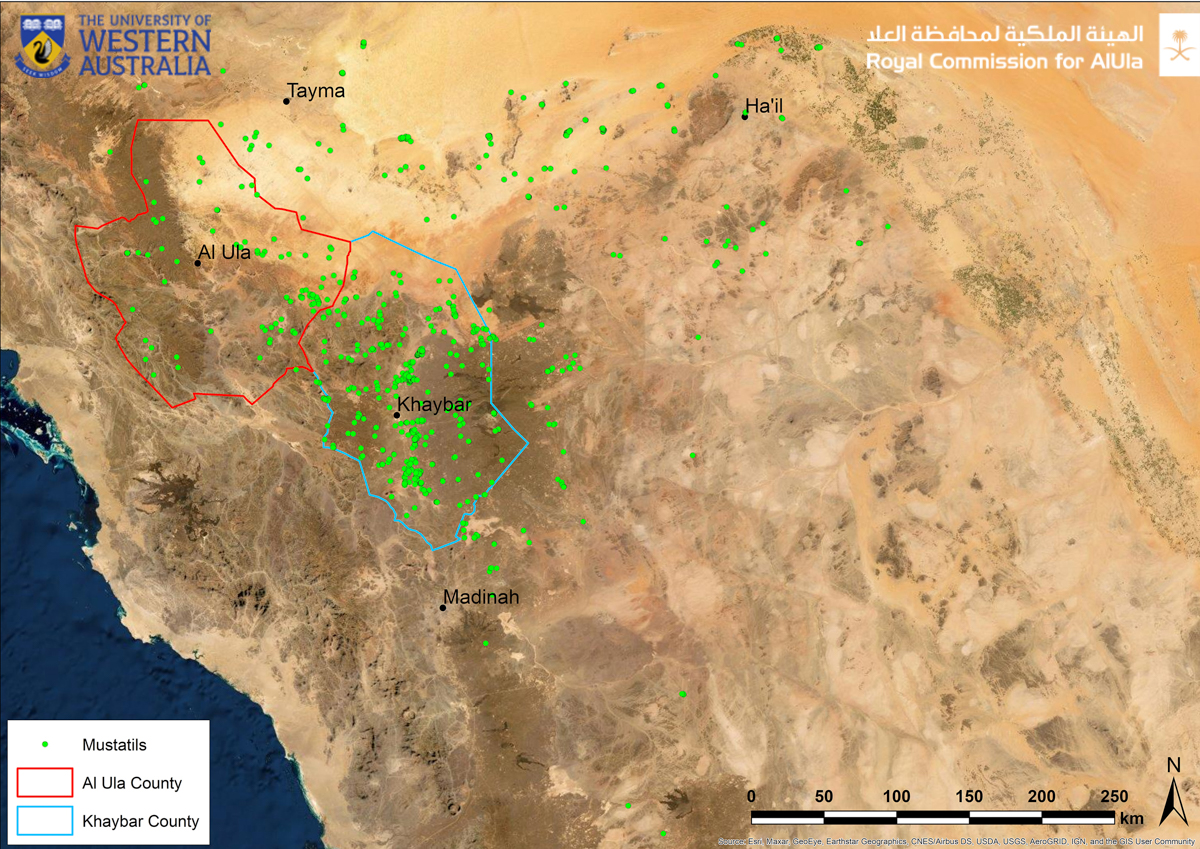
The @aaksa_project regularly discusses the mustatil and burials located in #AlUla & #Khaybar. But where did the people who built these structures live? Our project has also been focusing on domestic structures from this time period as part of our work for @RCU_SA. Thread! 1/13 

When you fly over the region, or look at satellite imagery, the tombs and mustatil are clear. This is because they are massive and regularly sit on slopes or the tops of mountains. But the domestic structures are visible too... you just need to know what you are looking for. 2/13 

Our colloquial term for these structures are 'camps', which we will use from here on out. Camps are located across the region and can vary in shape, size and complexity. They can be simple circular enclosures, or large groups of 'cells', a bit like honeycomb. 3/13 



On the ground they generally consist of a roughly laid wall of stones, on which perishable materials such as wood, fabrics, or skins could be erected to form a roof. For most domestic structures, we do not find evidence of roofs, but we do have some made of stone. 4/13 





Camps are often overlooked by media or instagrammers, as they are less visually spectacular than the tombs. However, they are so important for our understanding of how people lived in this landscape-and they can be beautiful, such as this huge camp in North AlUla 5/13 

The residents of this area decorated in and around the camp with countless panels of rock art. Here we can see a cow, probably carved around 7000 years ago. 6/13 

Camps are also the place of RUBBISH- which is an archaeologists best friend. Why? Because these are the things used by the inhabitants. We find lots of lithics, the stone tools that were regularly used for all aspects of their lives. 7/13 

When we say we find lots of lithics.... We mean a LOT! Countless boxes are filled with them. They may look like simple stones to most people, but for someone like Finn Stileman, these worked rocks tell a story! 8/13 

The other major thing we find is bone! The leftovers of meals eaten by people living there. These are so crucial to our understanding of what they were eating- domestic or wild animals? Old vs young? Sometimes specialists can even tell us what season the animal was killed in.9/13 

We also find traces of other aspects of their lives. This stone was used as a pigment, which was crushed to make a crude 'paint'. Our wonderful friend @albalawi of @DiscoverAlUla helped us find some pigments in situ. Here you can see Finn, covered in red! 10/13 





Our understanding of the ancient camp sites is aided by our knowledge of the modern use of these landscapes. @albalawi, whose family has lived in #AlUla for generations, has been a constant source of knowledge. Where/when is water available? Where do people camp & hunt? 11/13 





When do these camps date to? Well, we know some are Neolithic (at least 7000-8000 years old) but we often find evidence of them being used over millennia. Perhaps reused by the same group or taken over as populations moved across the landscape. Some were even used recently! 12/13 



Want to know more? @UWAresearch PhD candidate @janecmcmahon is currently studying specific types of Neolithic domestic structures in #AlUla & #Khaybar. She is in the process of publishing the 1st results from these sites & what she has discovered is fantastic. So stay tuned!13/13 



• • •
Missing some Tweet in this thread? You can try to
force a refresh










